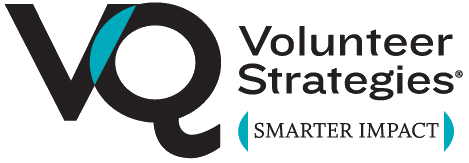Blog: From Workshop to Workin’ It: One Colleague’s Strategic Planning Journey

There is nothing more inspiring and energizing than hearing firsthand how a workshop or tool or webinar equipped someone in the field to successfully make a change and enhance engagement. I had that opportunity recently when I encountered Rachel Ohlhausen at a workshop I was leading in Kansas City for Nonprofit Connect. After warmly greeting me, Rachel launched into a wonderful explanation of how she had participated in the 2018 Al!ve/Better Impact Hybrid conference where I presented on the importance of developing a strategic plan for volunteer engagement. That 20 minute presentation and subsequent panel discussion were all that Rachel needed to launch into action – recognizing that such a plan was exactly what she needed to elevate her work and the engagement strategy at Shepherd’s Center Central, where she was serving as the Adventures in Learning Program and Volunteer Manager.
She shared a copy of her strategic plan with me and we set up a time to talk so I could hear more about her journey as a one-woman champion for engagement strategic planning. Here is what I learned.
Having been hired in early 2018, Rachel’s primary volunteer responsibilities included:
- Interviewing and screening interested volunteer candidates
- Referring qualified candidates across the organization
- Running selected annual volunteer events like fall leaf-raking and a holiday project
Despite that large load, she still felt that the engagement strategy was relatively flat and overly-administrative. As she put it, “it was missing a real strategy and higher purpose.” After hearing about strategic plans for engagement, she decided to leverage the planning process to make real change. She hoped that the process would:
- Articulate organization-wide shared goals for engaging volunteers
- Demonstrate that, while volunteer positions may differ, unifying processes and the corps would benefit the organization by increasing efficiency and impact
- Articulate impact of volunteer involvement in a more robust way
She started by assessing her own practices. She asked:
- Where do we have gaps? What are my challenges on a staff level?
- She realized they had a number of gaps, including: lack of internal volunteer management policies and trainings for staff and volunteers. Regarding training, for example, Program Managers reinvented trainings for volunteers instead of developing annual trainings that could be repeated and refined. Program staff received no training on volunteer engagement. Furthermore, the volunteer opportunities and programs were siloed from each other and from the Volunteer Manager.
She then identified a vision for how volunteers would feel and be engaged, and the outcomes they could drive through their engagement. She asked:
- How do we want volunteers to feel? What impacts do we think they can have? What do we need to do to ensure we achieve this vision?
- She realized she needed to improve training, focus on volunteer engagement best practices such as position descriptions and policies, and gain staff buy-in.
With those priorities in mind, she developed a strategic plan that articulated that vision, detailed the priorities, and outlined the action steps to get there. She gathered input and support from her supervisor and then shared it more widely – seeking input from other managers and colleagues across the organization. The organization now has a plan to carry the engagement work forward – which is even more important as, since the writing the plan, Rachel has accepted a position at a different organization in Kansas City. But here are the lessons we can learn from her efforts:
- Embrace your position of leadership. Rachel sought to shift not only her position from administrator to leader but the organization from program-focused to strategic engagement. Developing a plan was a path to do that, but it only happened because she embraced her leadership potential.
- Adapt the planning process. While we at VQ normally advocate for a collaborative planning process, at the time, Rachel’s organization was not ready for an enterprise-wide process. As such, she did what made sense for her organization – developing the plan, securing leadership buy-in, presenting it, inviting feedback, and then rolling it out widely through staff presentations and one on one meetings with Program Managers.
- Ensure sustainability. By documenting the vision, priorities, and action steps, Rachel has equipped her successor (and the organization as a whole) with a plan to ensure not only continuity but also sustainable growth because this strategic plan exists. In other words, the process forced her to “get the work out of her head and onto paper.”
Do you have a strategic plan for engagement? If not, what are you waiting for? While an organization-wide, collaborative process can be transformational, if your organization isn’t ready for that, don’t wait around for that day to come. Make it come sooner by embracing your role as a leader, adopting a planning process that works for your culture today, and ensure some focused progress in the future by developing a plan now.
